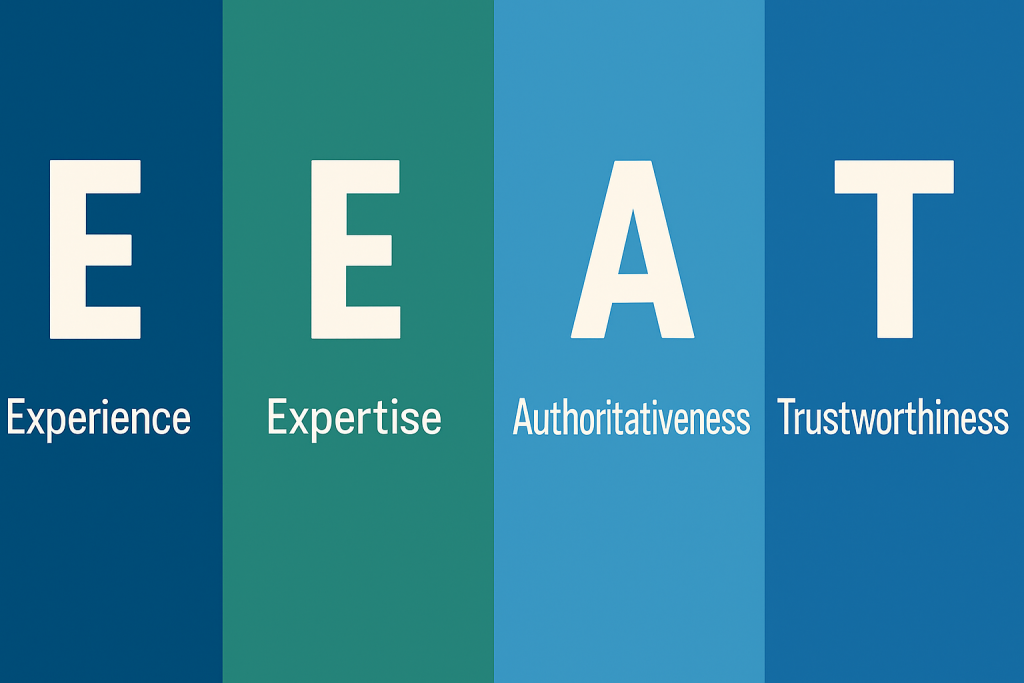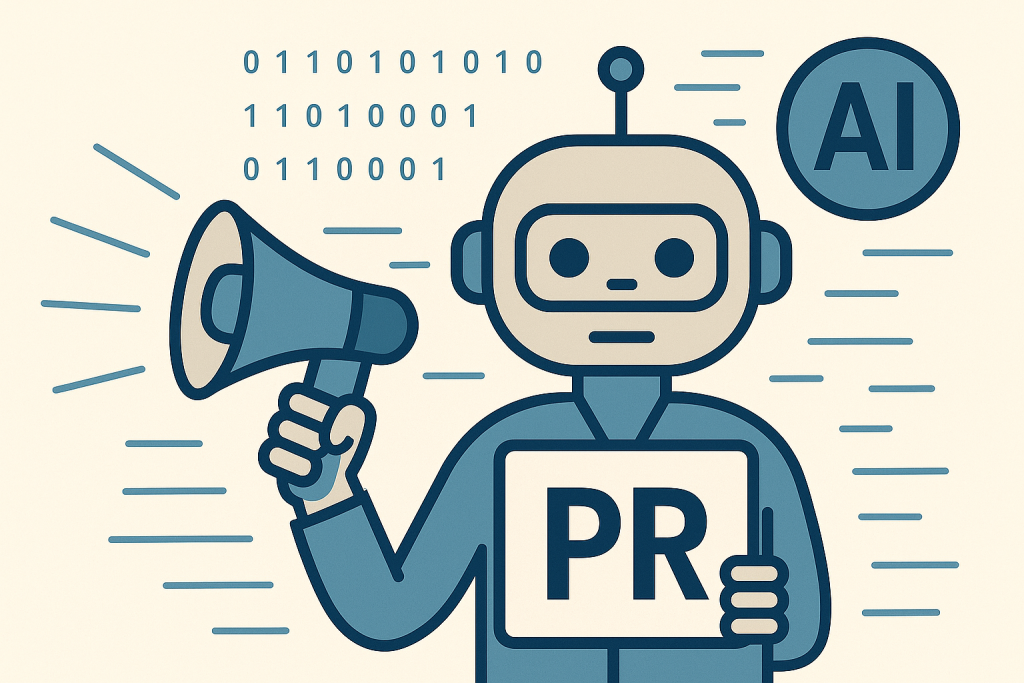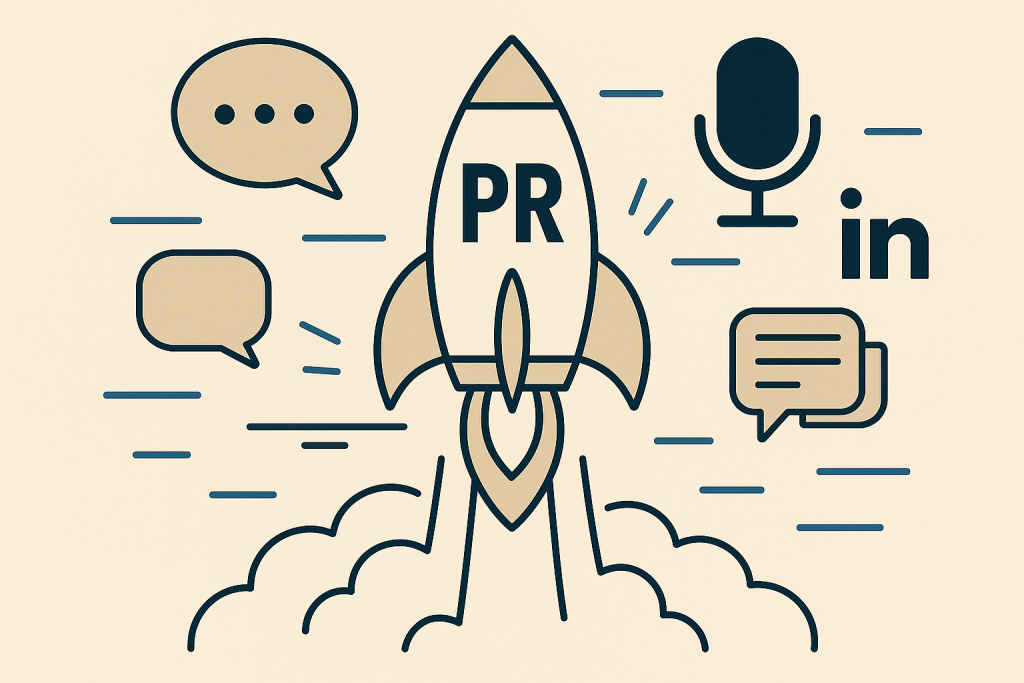
Opportunities and Challenges (not only) for B2B Technology Providers
The communications landscape is changing rapidly. Artificial Intelligence (AI) is reshaping how information is created, distributed, and consumed. For communications teams at B2B technology providers, this means traditional PR strategies are no longer enough.
The key question is: How can PR be reimagined in the age of AI—without losing credibility and relevance? And how to maintain visibility in world where AI-chatbots and search rsults are the new gatekeepers?
1. AI Is Changing the Rules of Communication
- Visibility in AI platforms: Being present in AI chatbots and AI-driven search results is becoming a PR task.
- Content production at record speed: Tools like GPT models can generate press releases, whitepapers, and social media posts within minutes. But legal and ethical pitfalls require clear internal guidelines.
- Content explosion: The sheer volume of (AI-generated) content is skyrocketing, making differentiation harder than ever.
- Automated reach optimization: AI-driven analytics show which content resonates with journalists, customers, and partners.
- Hyper-personalization: Content can now be adapted in real time to the specific needs of target groups.
👉 For B2B technology providers, this means: the competition for visibility is intensifying. Simply producing more content won’t cut it. Strategic storytelling becomes critical.
2. PR and E-E-A-T: How to Gain AI Visibility
AI systems rank content based on relevance, credibility, and authority, using E-E-A-T signals (Experience, Expertise, Authoritativeness, Trustworthiness).
To appear in AI-driven search (ChatGPT, Gemini, Perplexity, Google SGE), B2B companies must embrace Generative Engine Optimization (GEO). Like SEO, GEO rewards structure—but even more so authenticity, depth, and reputation. And this is where PR becomes a key driver.

- PR builds authority: Mentions in trade media, backlinks, and interviews improve domain authority and SEO.
- In an AI-driven world, credibility becomes twice as important—because machines surface what they deem most trustworthy.
- Thought leadership matters: Executives who share their experience (first-hand knowledge) and expertise through insights, studies, and analyses not only gain media coverage but also strengthen trust.
- PR creates authority signals: Expert articles, keynote speeches, and media quotes elevate the brand beyond product communication.
- “Experience” in B2B: Demonstrate that your company has hands-on involvement with the products, services, or processes you discuss—through:
- Case studies of client implementations
- Testimonials or success stories from real projects
- Insights and lessons learned from pilots or campaigns
This proves you’ve been there and done it—helping other businesses trust that your advice is grounded in real-world practice.
👉 In the AI era, PR becomes a strategic lever: delivering depth, credibility, and reputation that product communication alone cannot.
3. AI Needs Human Authenticity
- People make brands credible: Executives and subject-matter experts who show their real experience stand out and help boost AI visibility.
- Opinionated voices matter: Thought leadership requires strong positions—something AI cannot deliver authentically.
👉 For B2B tech providers, this means: PR becomes the stage for real people. Visibility and trust stem from identifiable human experts.
Read more about that: People Relations are Essential in the Age of AI
4. Practical Tips for B2B Technology Providers
- Re-elevate PR: Assess which content strategies and media matter most for GEO—not all are equally valued by AI systems.
- Position leaders as experts: Prioritize authenticity and thought leadership by placing C-level voices in media and on stage.
- Use AI as a tool, not a replacement: AI enhances—but cannot replace—human expertise.
- Set editorial rules: Define what can be AI-generated and what must stay human-made.
- Ensure ethics and compliance: Establish guardrails to prevent misinformation and reputational risk.
- Experiment smartly: Start with small AI pilot projects in PR and build on the learnings.
Conclusion
PR in the age of AI offers enormous opportunities for B2B technology providers: more efficiency, better audience targeting, and new formats. Real differentiation comes from authentic communication and the ability to use AI wisely.
👉 The future of PR is not an “either human or machine,” but a “human with machine.”
About the author
I am Thomas Konrad, a freelance tech PR and content marketing specialist. I have been supporting tech companies and start-ups with their communications for 25 years. I bring your products, innovations, people and brands to the global stage, using AI wisely and responsibly.


